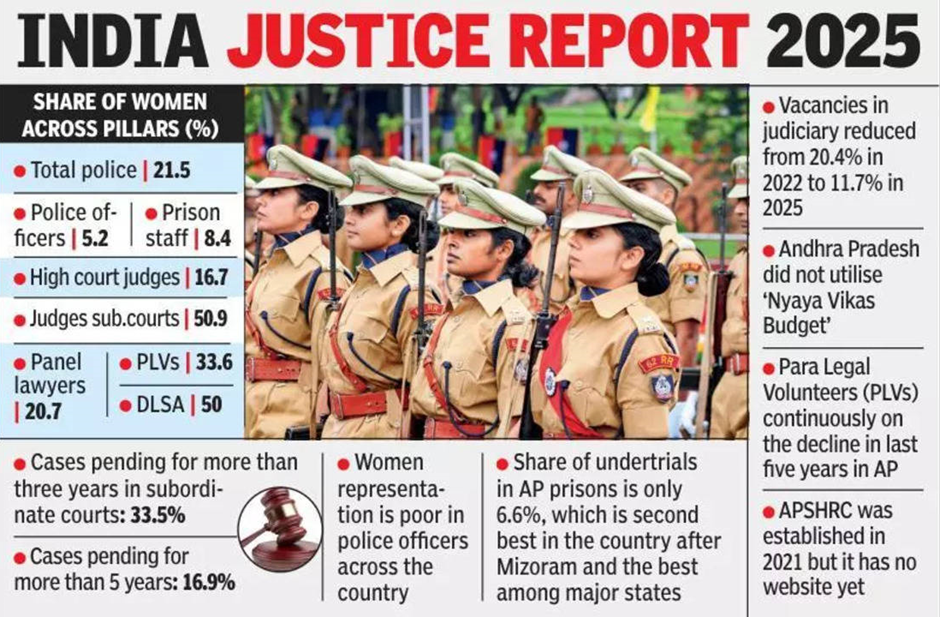Context:
The India Justice Report (IJR) 2025, released on April 15, 2025, provides a comprehensive assessment of the state of justice delivery across Indian States and Union Territories. Initiated by Tata Trusts and supported by several civil society organizations and data partners, the report evaluates the performance of States across four key pillars: Police, Judiciary, Prisons, and Legal Aid.
Key highlights of the Report:
· Gender Representation in Police Forces: A key finding of the IJR 2025 is the underrepresentation of women in senior police roles—fewer than 1,000 among 20.3 lakh personnel. No State or UT has met its reserved quota for women in the police. Bihar has the highest share of women in its State police, though such representation remains uneven nationwide.
· Torture and Infrastructural Gaps: The report highlights that torture remains a persistent issue within India’s policing system. It notes that 17% of police stations lack CCTV surveillance and nearly 30% lack women help desks, indicating shortcomings in infrastructural and gender-sensitive mechanisms. Although the police receive the highest per capita justice expenditure at ₹1,275, there are only one civil police personnel for every 831 people, pointing to an inadequate police-to-population ratio.
· Judicial Vacancies and Budget Allocation: India faces significant judicial vacancies, with Gujarat recording the highest in both High Court Judges and staff. In Uttar Pradesh, over half the High Court Judges' posts remain unfilled. Bihar shows severe delays, with 71% of trial and district court cases pending for over three years. Nationally, the per capita judiciary expenditure is ₹182, yet no State allocates more than 1% of its annual budget to it.
· Prison Conditions: As per the Report, Uttar Pradesh has the most overcrowded prisons, while in Delhi, undertrials make up 91% of inmates. In contrast, Tamil Nadu leads in prison management with high budget use, low staff vacancies, and the best officer workload—22 inmates per officer.
o However, Tamil Nadu's overall justice performance has declined. Its police ranking dropped from 3rd in 2024 to 13th in 2025 due to weak budget and training. In legal aid, it fell from 12th to 16th because of low funding and fewer paralegal volunteers.
o Nationally, per capita prison spending is ₹57. The average spend per prisoner rose from ₹38,028 in 2021–22 to ₹44,110 in 2022–23. Andhra Pradesh spent the most—₹2,67,673 per prisoner—showing wide disparities across States.
· Legal Aid: The national per capita spending on legal aid remains alarmingly low at ₹6 per annum, reflecting the persistent neglect of this critical pillar.
Conclusion
The IJR 2025 highlights the urgent need for reforms and better investment across all parts of the justice system. Issues like gender gaps, poor infrastructure, underfunding, and staff shortages continue to block access to fair and timely justice. While States like Tamil Nadu and Karnataka show progress in some areas, a coordinated, all-round effort is needed to create a strong and inclusive justice system.









